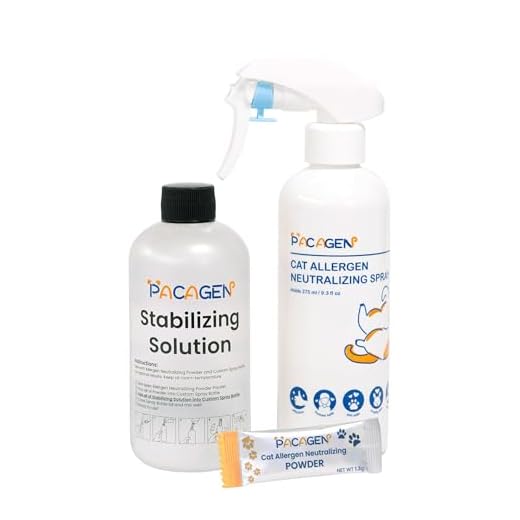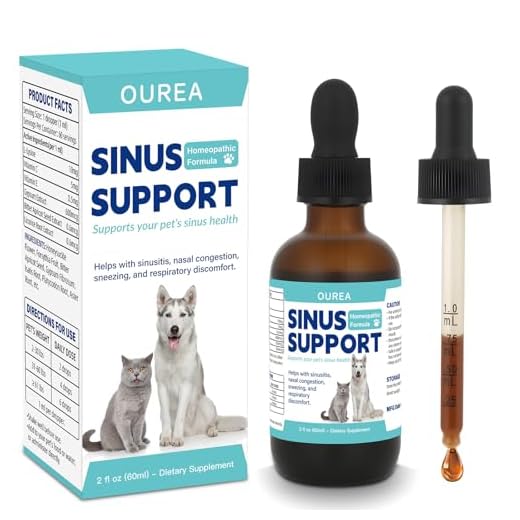



First and foremost, if you notice that I am struggling to get air in a calm manner, it’s crucial to observe my overall behavior. If I seem lethargic, refuse to eat, or display signs of distress, seeking immediate veterinary attention is a wise decision.
There are several possible reasons for my increased effort in getting air. Allergies can play a significant role, causing irritation and swelling in my nasal passages. Pollen, dust, or certain household chemicals can trigger these reactions. Keeping my environment clean and minimizing exposure to potential allergens can help alleviate discomfort.
Another factor to consider is an upper respiratory infection. These infections are common and can lead to inflammation that makes it difficult for me to breathe comfortably. Symptoms might include a watery discharge from my eyes or nose, sneezing, or coughing. If you suspect this, a visit to the vet for a proper diagnosis and treatment plan is essential.
Lastly, underlying health conditions such as asthma or heart disease can contribute to my labored exhalation. Regular vet check-ups can help identify any chronic issues early on, allowing for better management of my health. Staying attentive to these signs can ensure I remain a happy, active feline.
Identifying Common Causes of Nasal Breathing Difficulty in Cats
One potential reason for difficulty with nasal airflow could be allergies. Pollen, dust, or certain foods may trigger reactions, leading to swelling in the nasal passages. If you suspect allergies, consider monitoring environmental changes or dietary shifts that could have contributed. You could also review what treats you offer; for instance, can cats eat ham lunch meat safely?
Infections are another frequent culprit. Both viral and bacterial infections can lead to inflammation and blockage. If you notice other symptoms like discharge or lethargy, a vet’s examination is crucial. They can determine if medication is necessary to alleviate discomfort.
Structural issues, like a deviated septum or polyps, may also impede airflow. These conditions often require professional evaluation and possible surgical intervention. If your companion has chronic issues, it may be worth discussing these possibilities with your veterinarian.
Lastly, environmental irritants, such as smoke or strong odors, can exacerbate nasal issues. Keeping living spaces clean and avoiding exposure to harmful substances can help improve overall well-being. If you’re confined to a smaller area, like asking how long can you keep a cat in one room, ensure it’s well-ventilated and free from irritants.
When to Seek Veterinary Care for Your Pet’s Breathing Issues
If you notice a significant alteration in your companion’s respiratory patterns, it’s crucial to act without delay. Look for signs such as rapid inhalation and exhalation, open-mouth inhaling, or unusual sounds like wheezing or snoring. These symptoms could indicate a serious health concern.
Seek veterinary assistance immediately if there are additional symptoms like lethargy, loss of appetite, or any changes in behavior. Difficulty in eating or drinking is also a red flag. If you observe any cyanosis, where the gums or tongue appear bluish, this warrants urgent medical attention.
In cases where your furry friend seems to be in distress, such as excessive panting or an inability to settle, don’t hesitate to contact your veterinarian. The earlier a condition is diagnosed, the better the chances of effective treatment.
Monitoring your pet’s everyday behavior is essential. If you notice prolonged episodes of these respiratory difficulties or if they worsen over time, schedule a visit to the clinic. Regular check-ups can help catch issues before they escalate.
Video:
First and foremost, if you notice that I am struggling to get air in a calm manner, it’s crucial to observe my overall behavior. If I seem lethargic, refuse to eat, or display signs of distress, seeking immediate veterinary attention is a wise decision.
There are several possible reasons for my increased effort in getting air. Allergies can play a significant role, causing irritation and swelling in my nasal passages. Pollen, dust, or certain household chemicals can trigger these reactions. Keeping my environment clean and minimizing exposure to potential allergens can help alleviate discomfort.
Another factor to consider is an upper respiratory infection. These infections are common and can lead to inflammation that makes it difficult for me to breathe comfortably. Symptoms might include a watery discharge from my eyes or nose, sneezing, or coughing. If you suspect this, a visit to the vet for a proper diagnosis and treatment plan is essential.
Lastly, underlying health conditions such as asthma or heart disease can contribute to my labored exhalation. Regular vet check-ups can help identify any chronic issues early on, allowing for better management of my health. Staying attentive to these signs can ensure I remain a happy, active feline.
Identifying Common Causes of Nasal Breathing Difficulty in Cats
One potential reason for difficulty with nasal airflow could be allergies. Pollen, dust, or certain foods may trigger reactions, leading to swelling in the nasal passages. If you suspect allergies, consider monitoring environmental changes or dietary shifts that could have contributed. You could also review what treats you offer; for instance, can cats eat ham lunch meat safely?
Infections are another frequent culprit. Both viral and bacterial infections can lead to inflammation and blockage. If you notice other symptoms like discharge or lethargy, a vet’s examination is crucial. They can determine if medication is necessary to alleviate discomfort.
Structural issues, like a deviated septum or polyps, may also impede airflow. These conditions often require professional evaluation and possible surgical intervention. If your companion has chronic issues, it may be worth discussing these possibilities with your veterinarian.
Lastly, environmental irritants, such as smoke or strong odors, can exacerbate nasal issues. Keeping living spaces clean and avoiding exposure to harmful substances can help improve overall well-being. If you’re confined to a smaller area, like asking how long can you keep a cat in one room, ensure it’s well-ventilated and free from irritants.
When to Seek Veterinary Care for Your Pet’s Breathing Issues
If you notice a significant alteration in your companion’s respiratory patterns, it’s crucial to act without delay. Look for signs such as rapid inhalation and exhalation, open-mouth inhaling, or unusual sounds like wheezing or snoring. These symptoms could indicate a serious health concern.
Seek veterinary assistance immediately if there are additional symptoms like lethargy, loss of appetite, or any changes in behavior. Difficulty in eating or drinking is also a red flag. If you observe any cyanosis, where the gums or tongue appear bluish, this warrants urgent medical attention.
In cases where your furry friend seems to be in distress, such as excessive panting or an inability to settle, don’t hesitate to contact your veterinarian. The earlier a condition is diagnosed, the better the chances of effective treatment.
Monitoring your pet’s everyday behavior is essential. If you notice prolonged episodes of these respiratory difficulties or if they worsen over time, schedule a visit to the clinic. Regular check-ups can help catch issues before they escalate.
Video:
First and foremost, if you notice that I am struggling to get air in a calm manner, it’s crucial to observe my overall behavior. If I seem lethargic, refuse to eat, or display signs of distress, seeking immediate veterinary attention is a wise decision.
There are several possible reasons for my increased effort in getting air. Allergies can play a significant role, causing irritation and swelling in my nasal passages. Pollen, dust, or certain household chemicals can trigger these reactions. Keeping my environment clean and minimizing exposure to potential allergens can help alleviate discomfort.
Another factor to consider is an upper respiratory infection. These infections are common and can lead to inflammation that makes it difficult for me to breathe comfortably. Symptoms might include a watery discharge from my eyes or nose, sneezing, or coughing. If you suspect this, a visit to the vet for a proper diagnosis and treatment plan is essential.
Lastly, underlying health conditions such as asthma or heart disease can contribute to my labored exhalation. Regular vet check-ups can help identify any chronic issues early on, allowing for better management of my health. Staying attentive to these signs can ensure I remain a happy, active feline.
Identifying Common Causes of Nasal Breathing Difficulty in Cats
One potential reason for difficulty with nasal airflow could be allergies. Pollen, dust, or certain foods may trigger reactions, leading to swelling in the nasal passages. If you suspect allergies, consider monitoring environmental changes or dietary shifts that could have contributed. You could also review what treats you offer; for instance, can cats eat ham lunch meat safely?
Infections are another frequent culprit. Both viral and bacterial infections can lead to inflammation and blockage. If you notice other symptoms like discharge or lethargy, a vet’s examination is crucial. They can determine if medication is necessary to alleviate discomfort.
Structural issues, like a deviated septum or polyps, may also impede airflow. These conditions often require professional evaluation and possible surgical intervention. If your companion has chronic issues, it may be worth discussing these possibilities with your veterinarian.
Lastly, environmental irritants, such as smoke or strong odors, can exacerbate nasal issues. Keeping living spaces clean and avoiding exposure to harmful substances can help improve overall well-being. If you’re confined to a smaller area, like asking how long can you keep a cat in one room, ensure it’s well-ventilated and free from irritants.
When to Seek Veterinary Care for Your Pet’s Breathing Issues
If you notice a significant alteration in your companion’s respiratory patterns, it’s crucial to act without delay. Look for signs such as rapid inhalation and exhalation, open-mouth inhaling, or unusual sounds like wheezing or snoring. These symptoms could indicate a serious health concern.
Seek veterinary assistance immediately if there are additional symptoms like lethargy, loss of appetite, or any changes in behavior. Difficulty in eating or drinking is also a red flag. If you observe any cyanosis, where the gums or tongue appear bluish, this warrants urgent medical attention.
In cases where your furry friend seems to be in distress, such as excessive panting or an inability to settle, don’t hesitate to contact your veterinarian. The earlier a condition is diagnosed, the better the chances of effective treatment.
Monitoring your pet’s everyday behavior is essential. If you notice prolonged episodes of these respiratory difficulties or if they worsen over time, schedule a visit to the clinic. Regular check-ups can help catch issues before they escalate.











